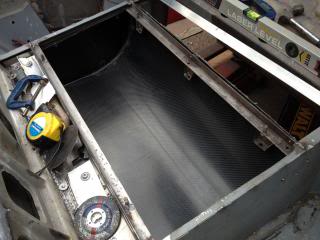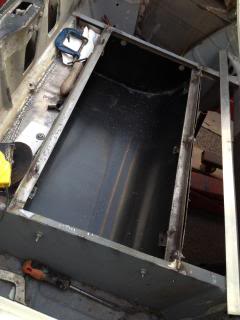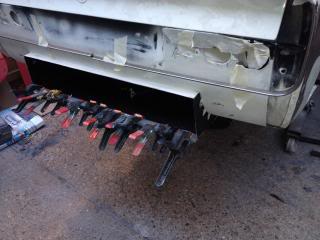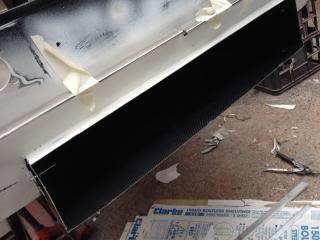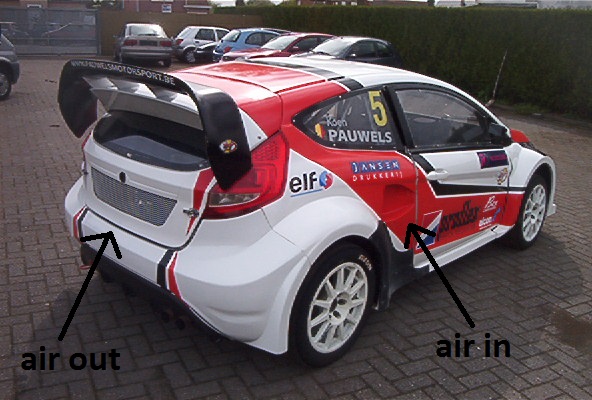Boot mounted Radiators
#202

this what i have come up with taken inspiration from G60rallye's stunning Audi, might not work but it will have two cold air inlets from rear side windows one each side and a scoop from under the car, then the hot air will exit via a big hole in the tailgate and two holes in the polycarbonate rear window, heat likes to rise so hoping when the car is stationary heat will escape through the rear window. the radiator will be enclosed.
the turbo is over the gearbox so thats not why i was thinking of moving the radiator to the boot, as the rs2k was not designed to have an intercooler fitted, so space up front is very limited for a decent sized intercooler, 100% want to try this but will use the standard engine to test first.
Last edited by black_jack; 24-12-2012 at 09:31 AM.
#203
I wouldnt have a duct from the tailgate window.
That area looks like it would be high pressure and would act against the air being scooped up from below.
The area that is deffinately low pressure it the back panel especially with the spoiler breaking up the airflow.
Its all about having a higher pressure one side of the rad more than the other
The greater the pressure difference, the more airflow and greater cooling
These are interesting
AutoSpeed - Undertrays, Spoiler & Bonnet Vents, Part 2
AutoSpeed - Blowing the Vortex, Part 1
That area looks like it would be high pressure and would act against the air being scooped up from below.
The area that is deffinately low pressure it the back panel especially with the spoiler breaking up the airflow.
Its all about having a higher pressure one side of the rad more than the other
The greater the pressure difference, the more airflow and greater cooling
These are interesting
AutoSpeed - Undertrays, Spoiler & Bonnet Vents, Part 2
AutoSpeed - Blowing the Vortex, Part 1
#204
Often the radiator was put in the back for weight distribution purposes -
eg - better traction/ weight distribution on a RWD mk1 / 2 Escort rally car or to help balance the front-heavy Audi quattro
As sierra1off has said - if the inlet is in a realatively high pressure area, and the outlet in a low pressure area - flow will occur - the highest pressure area is the front of the car (grill etc) everything else is medium/ in-between - the back panel is the lowest pressure area, as long as the exit is at the extreme back of the car, (eg, back panel) this low pressure area will "suck" the air through ducts of any shape or size on the top, bottom or sides of the car, with or without nrca ducts, big scoops etc
Because when the car moves through the air a low pressure area is formed at the rear of the car (realative to the top, bottom, or sides)
If the inlets are lower than the outlet/s, the the heat rises (a "chimny" effect) out of the outlet/s aiding cooling without fans even when the car is stationary, if this is the "wroing way round", it can cause problems or a reverse flow situation or this effect may work against the flow of the fan/s or the normal flow of the air when the car is moving
An electronically controlled electric waterpump does not need a thermostat, the temprature is controlled by switching the pump off/ on or turning it up/down automatically to reach a pre - determined (adjustable) temprature, the electric waterpump only works on demand/ proportional to need, and does not "rob" any power from the engine, the pump can be set to run after the engine is turned off and often the radiator fan/s can be dispensed with (saving weight- they only work under about 40mph in an efficiently vented system, anyway) it is more expensive than a mechanical pump but is more effective and is easier/ quicker to change - a lot of hot rods/ dragsters use them and some rally cars/ track cars - if i was building a rear mounted radiator - i would use an electric pump - i used one on my (front mounted radiator) project.
eg - better traction/ weight distribution on a RWD mk1 / 2 Escort rally car or to help balance the front-heavy Audi quattro
As sierra1off has said - if the inlet is in a realatively high pressure area, and the outlet in a low pressure area - flow will occur - the highest pressure area is the front of the car (grill etc) everything else is medium/ in-between - the back panel is the lowest pressure area, as long as the exit is at the extreme back of the car, (eg, back panel) this low pressure area will "suck" the air through ducts of any shape or size on the top, bottom or sides of the car, with or without nrca ducts, big scoops etc
Because when the car moves through the air a low pressure area is formed at the rear of the car (realative to the top, bottom, or sides)
If the inlets are lower than the outlet/s, the the heat rises (a "chimny" effect) out of the outlet/s aiding cooling without fans even when the car is stationary, if this is the "wroing way round", it can cause problems or a reverse flow situation or this effect may work against the flow of the fan/s or the normal flow of the air when the car is moving
An electronically controlled electric waterpump does not need a thermostat, the temprature is controlled by switching the pump off/ on or turning it up/down automatically to reach a pre - determined (adjustable) temprature, the electric waterpump only works on demand/ proportional to need, and does not "rob" any power from the engine, the pump can be set to run after the engine is turned off and often the radiator fan/s can be dispensed with (saving weight- they only work under about 40mph in an efficiently vented system, anyway) it is more expensive than a mechanical pump but is more effective and is easier/ quicker to change - a lot of hot rods/ dragsters use them and some rally cars/ track cars - if i was building a rear mounted radiator - i would use an electric pump - i used one on my (front mounted radiator) project.
Last edited by black_jack; 24-12-2012 at 10:55 PM. Reason: extra info
#206
Often the radiator was put in the back for weight distribution purposes -
eg - better traction/ weight distribution on a RWD mk1 / 2 Escort rally car or to help balance the front-heavy Audi quattro
As sierra1off has said - if the inlet is in a realatively high pressure area, and the outlet in a low pressure area - flow will occur - the highest pressure area is the front of the car (grill etc) everything else is medium/ in-between - the back panel is the lowest pressure area, as long as the exit is at the extreme back of the car, (eg, back panel) this low pressure area will "suck" the air through ducts of any shape or size on the top, bottom or sides of the car, with or without nrca ducts, big scoops etc
Because when the car moves through the air a low pressure area is formed at the rear of the car (realative to the top, bottom, or sides)
If the inlets are lower than the outlet/s, the the heat rises (a "chimny" effect) out of the outlet/s aiding cooling without fans even when the car is stationary, if this is the "wroing way round", it can cause problems or a reverse flow situation or this effect may work against the flow of the fan/s or the normal flow of the air when the car is moving
An electronically controlled electric waterpump does not need a thermostat, the temprature is controlled by switching the pump off/ on or turning it up/down automatically to reach a pre - determined (adjustable) temprature, the electric waterpump only works on demand/ proportional to need, and does not "rob" any power from the engine, the pump can be set to run after the engine is turned off and often the radiator fan/s can be dispensed with (saving weight- they only work under about 40mph in an efficiently vented system, anyway) it is more expensive than a mechanical pump but is more effective and is easier/ quicker to change - a lot of hot rods/ dragsters use them and some rally cars/ track cars - if i was building a rear mounted radiator - i would use an electric pump - i used one on my (front mounted radiator) project.
eg - better traction/ weight distribution on a RWD mk1 / 2 Escort rally car or to help balance the front-heavy Audi quattro
As sierra1off has said - if the inlet is in a realatively high pressure area, and the outlet in a low pressure area - flow will occur - the highest pressure area is the front of the car (grill etc) everything else is medium/ in-between - the back panel is the lowest pressure area, as long as the exit is at the extreme back of the car, (eg, back panel) this low pressure area will "suck" the air through ducts of any shape or size on the top, bottom or sides of the car, with or without nrca ducts, big scoops etc
Because when the car moves through the air a low pressure area is formed at the rear of the car (realative to the top, bottom, or sides)
If the inlets are lower than the outlet/s, the the heat rises (a "chimny" effect) out of the outlet/s aiding cooling without fans even when the car is stationary, if this is the "wroing way round", it can cause problems or a reverse flow situation or this effect may work against the flow of the fan/s or the normal flow of the air when the car is moving
An electronically controlled electric waterpump does not need a thermostat, the temprature is controlled by switching the pump off/ on or turning it up/down automatically to reach a pre - determined (adjustable) temprature, the electric waterpump only works on demand/ proportional to need, and does not "rob" any power from the engine, the pump can be set to run after the engine is turned off and often the radiator fan/s can be dispensed with (saving weight- they only work under about 40mph in an efficiently vented system, anyway) it is more expensive than a mechanical pump but is more effective and is easier/ quicker to change - a lot of hot rods/ dragsters use them and some rally cars/ track cars - if i was building a rear mounted radiator - i would use an electric pump - i used one on my (front mounted radiator) project.
Lol all this said by me and few others back in the post
But can be bad if you loos to much heat graham
#208
PassionFord Post Troll
iTrader: (2)
Joined: May 2003
Posts: 3,067
Likes: 2
From: In my garage, coventry
Old thread I know
I have done some more work on my rear rad conversion,
Im taking air from both sides of the car
I have made these air scoops out of carbon
They feed 2 inner air channels again in carbon to
Quite large air pipes into a air pressure box again carbon lol
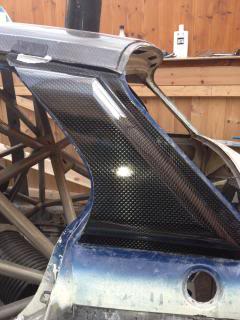

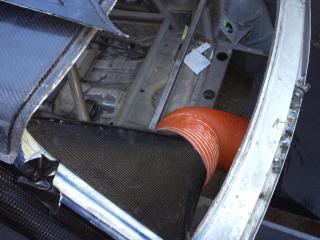
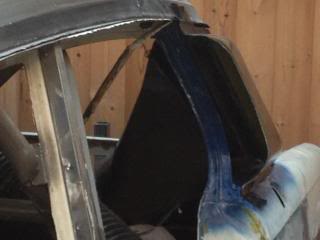
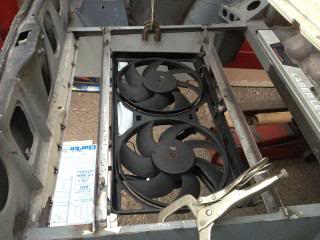
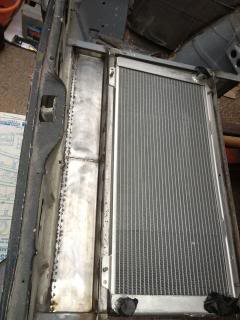
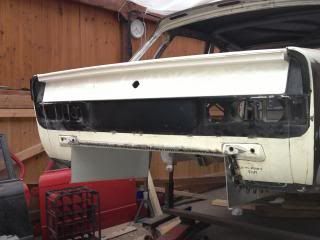
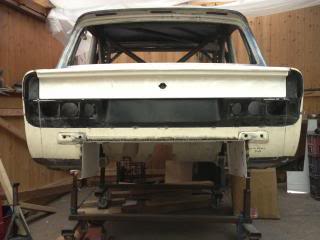
Air will flow out the back HOPE fully lol
Still a lot of work to do but getting there
Good place to store the workmate fits perfect lol
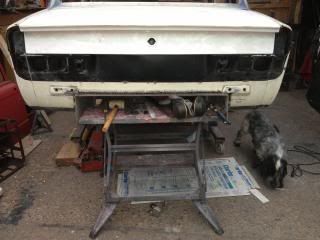
I have done some more work on my rear rad conversion,
Im taking air from both sides of the car
I have made these air scoops out of carbon
They feed 2 inner air channels again in carbon to
Quite large air pipes into a air pressure box again carbon lol








Air will flow out the back HOPE fully lol
Still a lot of work to do but getting there
Good place to store the workmate fits perfect lol

Last edited by Alg1k; 17-08-2013 at 10:34 PM.
#209
Is the air exiting the rear panel or underneath ?
as the air under the car isnt normally very low pressure unless you have a deep spoiler at the front of the car keeping air from traveling underneath
That ducting looks good
as the air under the car isnt normally very low pressure unless you have a deep spoiler at the front of the car keeping air from traveling underneath
That ducting looks good
#210
PassionFord Post Troll
iTrader: (2)
Joined: May 2003
Posts: 3,067
Likes: 2
From: In my garage, coventry
Number plate ,
I have to make the duct for that yet
I have worked out the size it needs to be to
Have low pressure area as the air leaves the rad,
I'm going to be using a gopro camera and some wool tassels
To see what's going on,
I have tried to gas flow (Lol)the system to aid the air flow
The ducting was bstard to make !!! 3 piece mold ..
Last edited by Alg1k; 19-08-2013 at 06:28 AM.
#213
Thread
Thread Starter
Forum
Replies
Last Post



